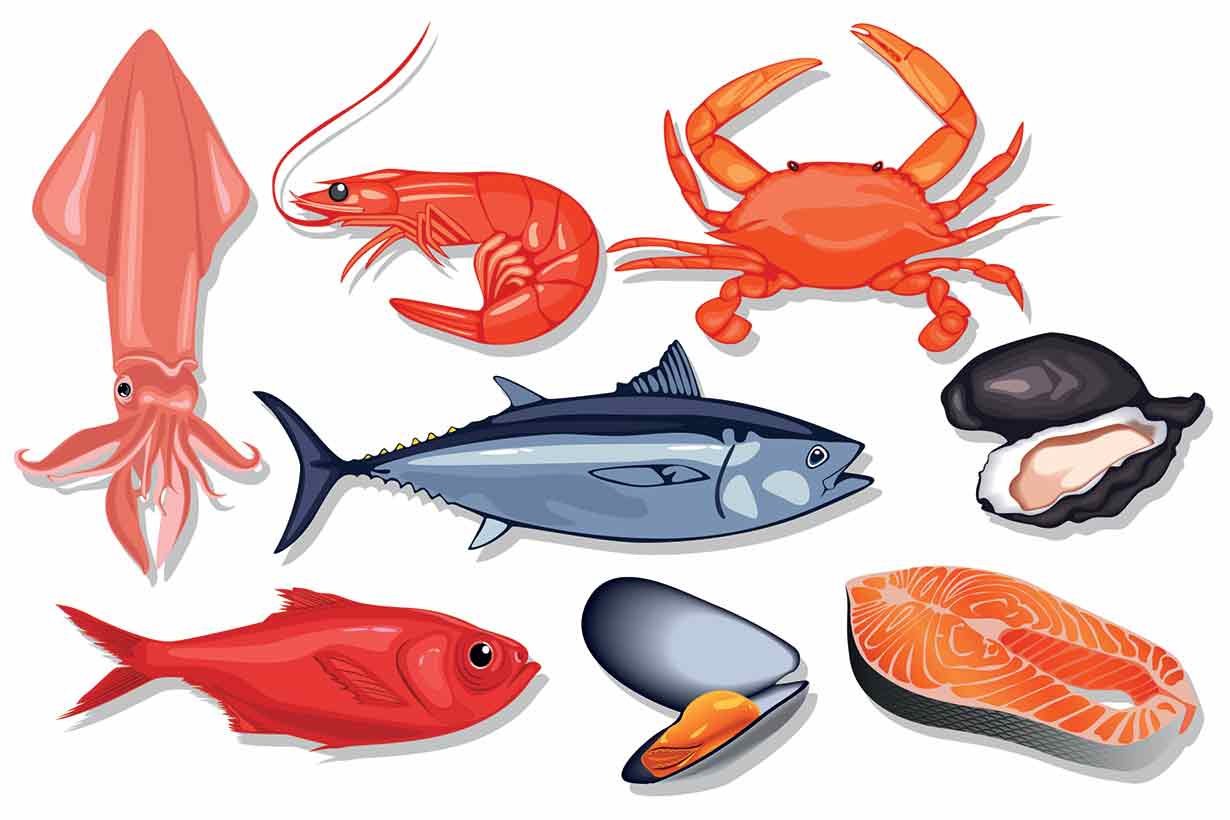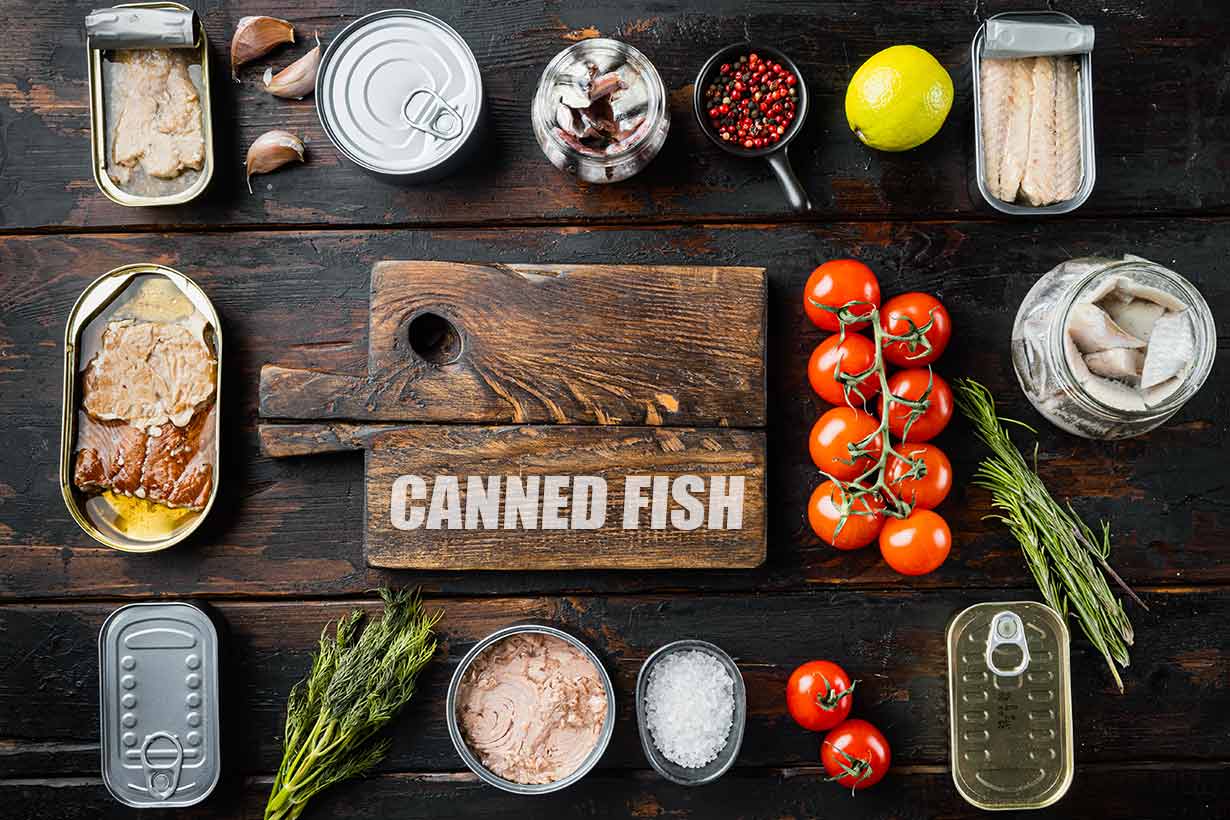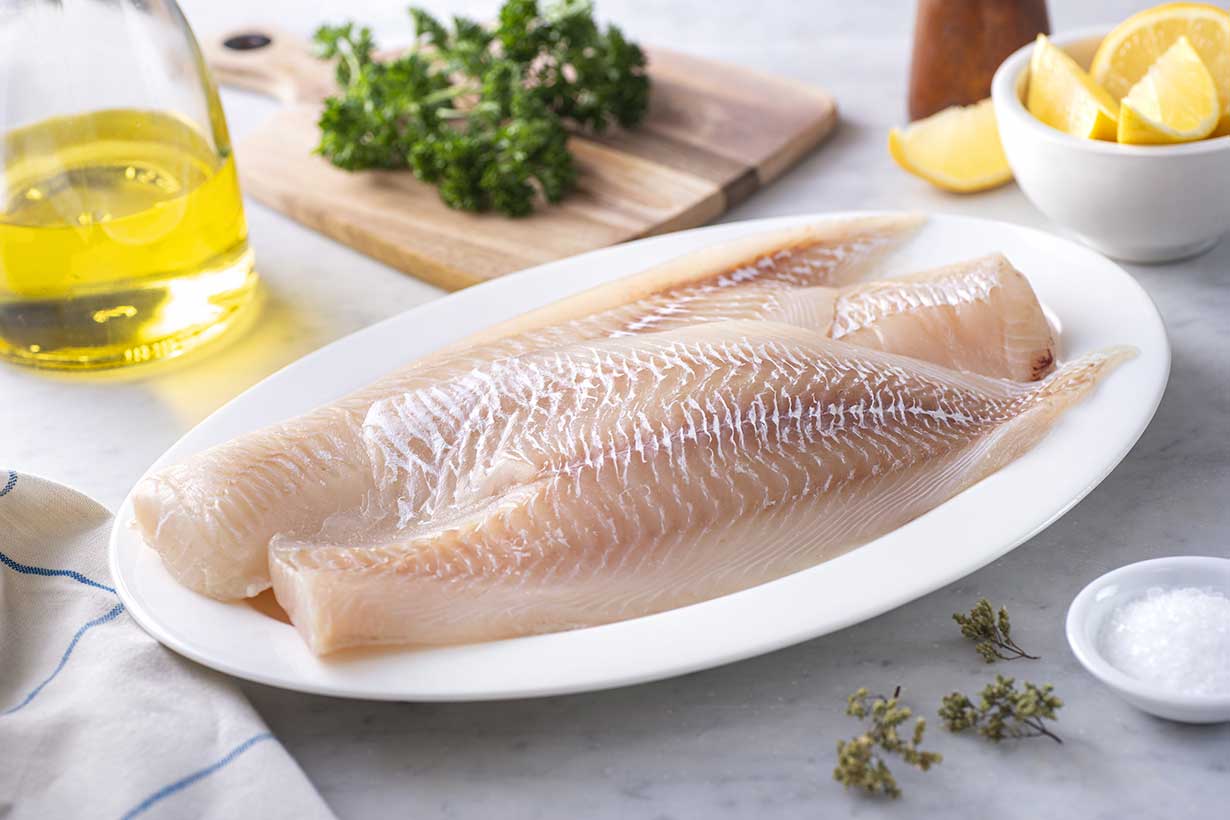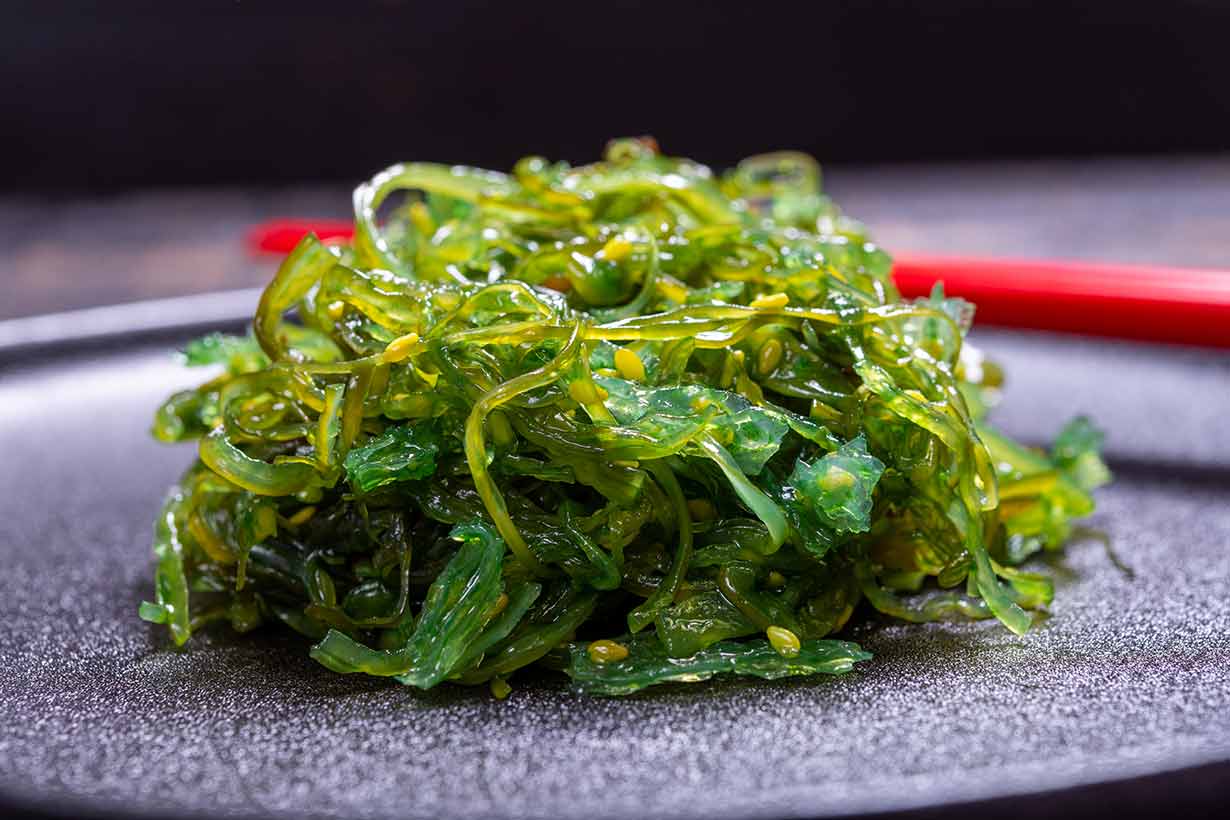Pollock is a wild-caught fish consistently among the top-selling seafood items in the United States (1, 2).
But what nutritional value and potential health benefits does this common fish provide? Furthermore, how do the mercury levels of pollock compare with those of other fish, and is it a sustainable choice?
This article provides a complete nutritional guide to pollock.
Key Nutrients
Key nutrients in 3.5 oz (100 g) of raw Alaska pollock:
- Calories: 76 kcal
- Fat: 0.82 g
- Omega-3: 0.24 g
- Protein: 17.2 g
- Vitamin B12: 1.6 mcg (68% DV)
- Selenium: 15.9 mcg (29% DV)
- Phosphorus: 284 mg (23% DV)
Source: USDA data
Daily values (% DV) are based on a 2,000 calorie diet.
Table of contents
Health Benefits of Pollock
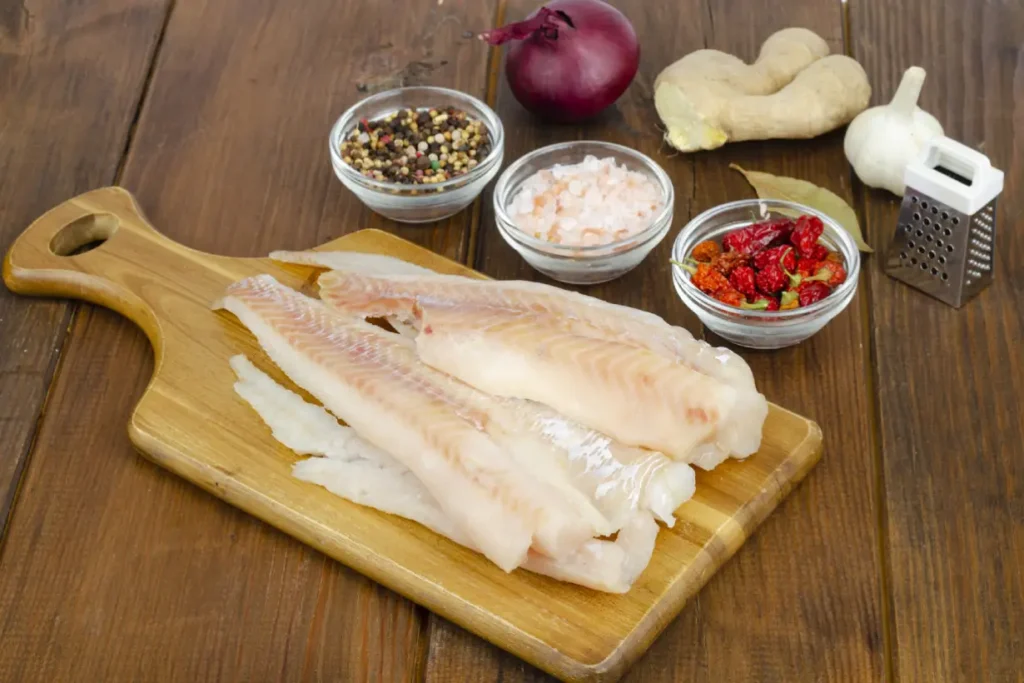
Here’s a summary of the main health and nutritional benefits of pollock.
A High Quality Source of Protein
Pollock provides a lean, high-quality source of protein, with 17.2 grams per 100 g of raw weight (3).
Notably, some studies have been undertaken on the health effects of pollock protein.
Specifically, a 2022 randomized controlled trial investigated the effect of chronic intake of Alaska pollock protein in healthy women over the age of 65 (4).
In this study, participants consumed 5 grams of Alaska pollock protein daily over 24 weeks. Compared with whey protein, Alaska pollock protein increased muscle mass and knee extention strength.
A 2024 study also found that daily pollock protein intake improved muscular strength and muscle control (5).
For another similar option, haddock is a lean, protein-rich fish.
A Rich Source of Selenium
As with many fish, pollock provides high amounts of dietary selenium, offering 29% of the daily value per 100 g raw (6).
Selenium is important for making DNA and protecting cells from damage (7).
Contains EPA and DHA (In Small Amounts)
Although pollockcontains far less omega-3 than oily fish, it still provides small amounts of EPA (eicosapentaenoic acid) and DHA (docosahexaenoic acid). EPA and DHA are preformed omega-3 fatty acids with excellent bioavailability (8).
Eating these forms of omega-3 helps to raise the omega-3 index. The omega-3 index refers to the amount of omega-3 fatty acids in the blood as a percentage of total fatty acids (9).
An omega-3 index of around 8% or more is linked to a lower risk of cardiovascular disease (10).
However, while pollock does provide some omega-3—0.24 grams per 100 g—it is worth noting that other fish species offer significantly more. For example, herring as well as salmon and tuna all provide substantially more.
Low In Calories and Good For Weight Management
As a lean white fish, pollock is rich in protein, vitamins, and minerals yet low in calories.
Such low-calorie, high-protein foods can be beneficial for weight management, providing the overall diet has similar characteristics (11, 12).
Additionally, lean white fish is one of the most satiating foods. Satiety refers to the ability of a food to help you feel full with no desire to eat further, an important attribute for individuals trying to lose weight (13, 14).
On this note, the landmark 1995 ‘satiety index of common foods‘ study ranked ling fish—a lean white fish similar to pollock—ranked second highest for satiety (15).
What is the Nutritional Profile of Pollock?
The following sections present the complete nutritional values for pollock, based on USDA data for raw Alaska pollock per 100 grams (3.5 oz).
Calories, macronutrients, and sodium data are sourced from USDA SR Legacy (3). Vitamin and mineral data come from USDA Foundation Foods (6).
Calories and Macronutrients
- Calories: 76 kcal
- Carbohydrate: 0 g
- Fiber: 0 g
- Sugars: 0 g
- Fat: 0.82 g
- Saturated fat: 0.15 g
- Monounsaturated fat: 0.10 g
- Polyunsaturated fat: 0.26 g
- Omega-3: 0.24 g
- Omega-6: 0.02 g
- Protein: 17.2 g
- Cholesterol: 61 mg
Vitamins
- Vitamin B12: 1.63 mcg (68% DV)
- Riboflavin (B2): 0.08 mg (6% DV)
- Pantothenic acid (B5): 0.24 mg (5% DV)
- Niacin (B3): 0.65 mg (4% DV)
- Vitamin B6: 0.07 mg (4% DV)
- Vitamin E: 0.49 mg (3% DV)
- Thiamin (B1): 0.03 mg (3% DV)
- Vitamin D: 0.2 mcg (1% DV)
- Vitamin A, RAE: 3 mcg (<1% DV)
- Vitamin C: 0 mg (0% DV)
- Vitamin K: 0 mcg (0% DV)
Minerals
- Selenium: 15.9 mcg (29% DV)
- Phosphorus: 284 mg (23% DV)
- Sodium: 159 mg (7% DV)
- Magnesium: 16.1 mg (4% DV)
- Potassium: 160 mg (3% DV)
- Zinc: 0.31 mg (3% DV)
- Copper: 0.03 mg (3% DV)
- Calcium: 15 mg (1% DV)
- Iron: 0.22 mg (1% DV)
- Manganese: 0.01 mg (<1% DV)
How Much Mercury Does Pollock Contain?
One of the potential negatives of fish is that some can contain high levels of the heavy metal mercury. Mercury levels can accumulate in the body over time, potentially leading to toxicity symptoms at certain levels (16).
On the positive side, research has demonstrated that pollock typically contains only low levels of mercury.
Here’s an overview of everything you need to know about pollock and its mercury content:
- A joint advisory published by the Food and Drug Administration (FDA) and Environmental Protection Agency (EPA) places pollock on the “Best Choices” list (17).
- The FDA/EPA advisory states that pregnant and breastfeeding women and children can consume 2-3 servings of “best choice” fish per week. Information on the precise amounts and what constitutes a serving is available here.
- The ‘FDA Monitoring Program’ ran from 1990 until 2012 and collected data on the mercury content of commercial fish across large samples. Based on 95 samples, pollock had a mean mercury content of 0.031 PPM—slightly higher than other low mercury fish like salmon (0.022 PPM), but significantly lower than fish like cod (0.111 PPM) and haddock (0.055 PPM) (18).
- A guide to mercury in fish published by the Natural Resources Defense Council (NRDC) lists pollock on their “least mercury” list of fish (19).
- A 2014 study on the mercury content of commercial fish in the United States found that pollock had among the lowest mercury levels among popular seafood (20).
Overall, pollock is among the least concerning fish in regard to its mercury content.
For more information on mercury in seafood, please refer to the following article:
Mercury in Seafood: Which Fish Contains the Most and Least Mercury?
How To Include Pollock In Your Diet
Pollock is widely available from grocery stores, supermarkets, and specialist seafood stores.
As with other lean fish varieties, it can be baked, grilled, pan-fried, or steamed.
It is also worth noting that pollock is the primary ingredient in surimi, which is otherwise known as imitation crab meat.
Sustainability: Where Is Pollock Sourced From?
While not strictly a nutritional issue, sustainability is an important topic for many people, so how does pollock fare?
Let’s take a look at the available information on pollock’s sustainability:
- NOAA Fisheries, a federal agency, states that Alaska pollock is not subject to overfishing. They note that it is sustainably managed according to United States regulations (21).
- According to NOAA Fisheries, Alaska’s pollock fishery is the second largest fishery worldwide, and widely recognized for its responsible management and sustainability (22).
- NOAA Fisheries also notes that Atlantic pollock is sustainably managed and harvested (23).
- Seafood Watch, a program run by the Monterey Bay Aquarium, list Alaska pollock as a recommended choice due to its responsible management. However, they note that some pollock caught in the Atlantic does not match the sustainability standards of Seafood Watch. You can read their sustainable pollock guide here.
Summary
Pollock is an excellent choice for anyone looking for fish which meets the following criteria:
- A low-calorie, high-protein lean fish option
- Low mercury levels
- Univerally listed as a sustainable seafood option (Alaska pollock)
Aside from this, pollock is also an excellent source of selenium and vitamin B12.
Overall, it can supply a lot of beneficial nutrients to your diet for relatively few calories.

